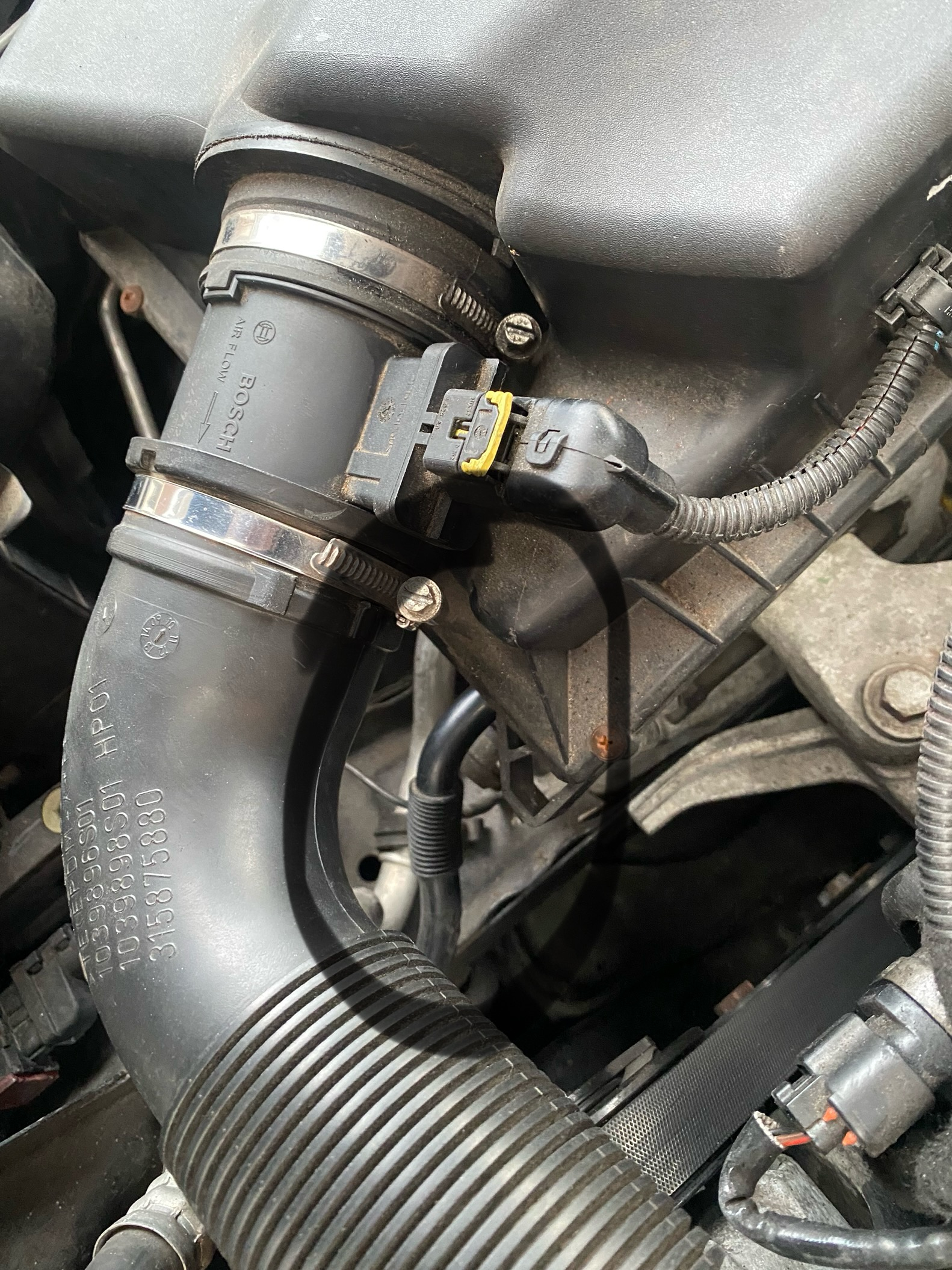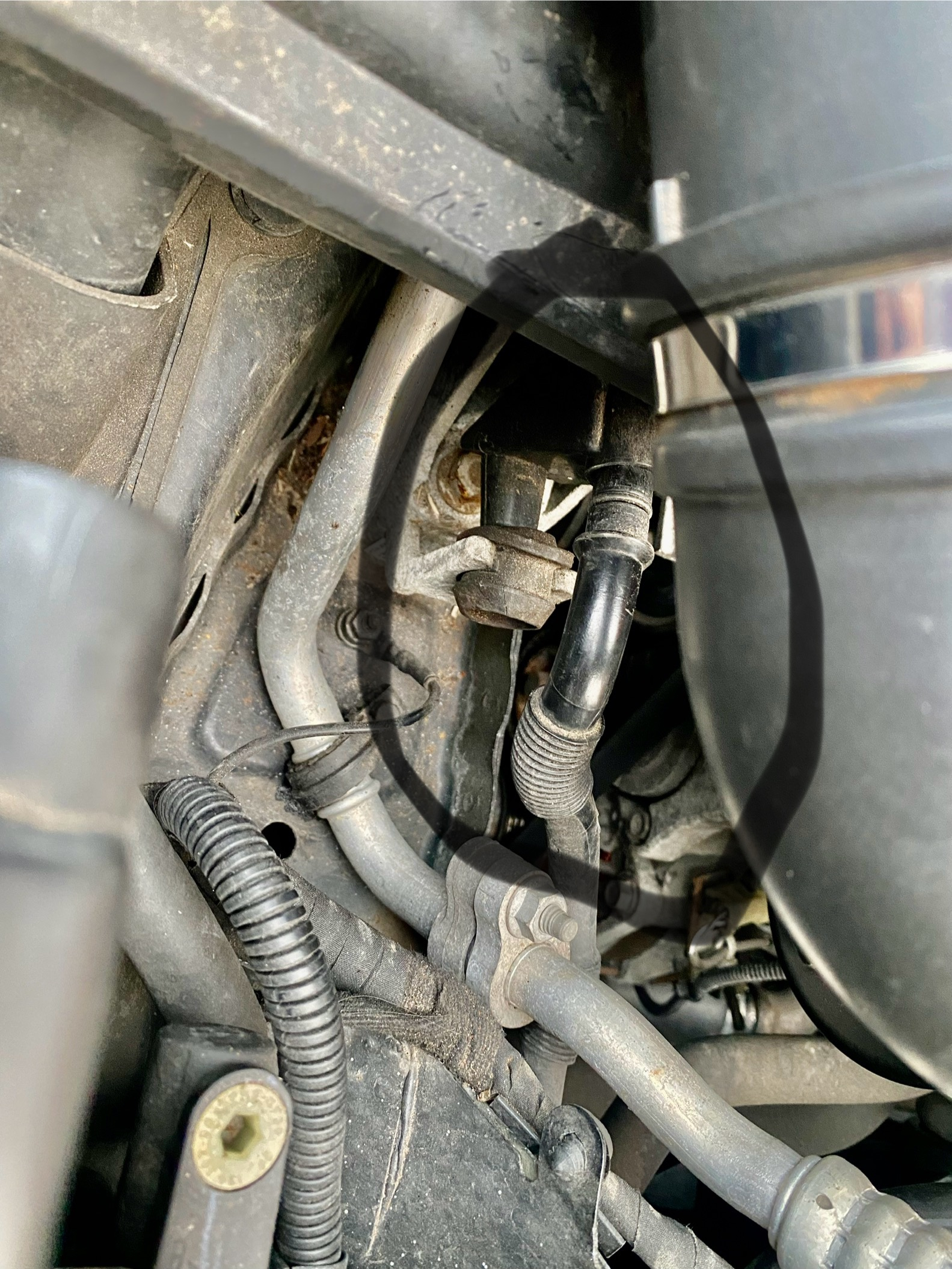We’d like to remind Forumites to please avoid political debate on the Forum.
This is to keep it a safe and useful space for MoneySaving discussions. Threads that are – or become – political in nature may be removed in line with the Forum’s rules. Thank you for your understanding.
📨 Have you signed up to the Forum's new Email Digest yet? Get a selection of trending threads sent straight to your inbox daily, weekly or monthly!
What’s this hose for

 So I’m cleaning my maf sensor as getting back idling and surging on the car fuel filter change and air filter can’t seem to find any splits in the hoses however when putting the air take hose back on notice this was almost disconnected?
So I’m cleaning my maf sensor as getting back idling and surging on the car fuel filter change and air filter can’t seem to find any splits in the hoses however when putting the air take hose back on notice this was almost disconnected?it’s leads from under where the engine air filter is
£2820/£4000 0% 24 months pay £150 HSBC
£2,100/£3000 0% 27 months pay £150 M&S
£3,050/£4000 0% 27 months pay £150 HALI
£2,200/£7250 0% 14 months pay £60 RBS
£990/£2000 28% Zable closed £60
mortgage £22,000/£89,000 2 years left
£2,100/£3000 0% 27 months pay £150 M&S
£3,050/£4000 0% 27 months pay £150 HALI
£2,200/£7250 0% 14 months pay £60 RBS
£990/£2000 28% Zable closed £60
mortgage £22,000/£89,000 2 years left
0
Comments
-
.....perhaps a make, model, year and engine type may help getting some answers??
.."It's everybody's fault but mine...."1 -
Sorry 1.7 Astra cdti 2010£2820/£4000 0% 24 months pay £150 HSBC
£2,100/£3000 0% 27 months pay £150 M&S
£3,050/£4000 0% 27 months pay £150 HALI
£2,200/£7250 0% 14 months pay £60 RBS
£990/£2000 28% Zable closed £60
mortgage £22,000/£89,000 2 years left0 -
-
Looks like some sort of breather to me, crankcase breather?
Mr Generous - Landlord for more than 10 years. Generous? - Possibly but sarcastic more likely.0 -
It's part of the crankcase ventilation system.
Your car will have a PCV system, (positive crankcase ventilation).
This allows the pressure inside the engine to equalise.
As the pistons rise and fall, so does the pressure under them.
Add to this blow by, which is a small amount of combustion that passes the piston rings and the pressures inside the crankcase can increase/decrease massively.
This requires a crankcase venting system.
There's all sorts of nasties in this vapour along with oil vapour, so a way to allow it to vent and dispose of it is needed.
Early systems just vented to atmosphere.
A pipe usually stuck in a can that caught the oily vapour that you emptied from time to time.
Not great as it usually dribbled oil on the road and emitted nasties into the air.
Later cars have the crankcase vent plumbed directly into the air intake system.
This caused the vapour to get sucked back into the engine to be burnt.
Some cars still use this system, but others, like turbos and diesels will have problems with it.
Trouble is all the oil vapour tends to clog everything up in the intake side of the engine, particularly when EGR (exhaust gas recirculation) systems pump hot exhaust gas full of soot back in the intake as well.
Diesels tend to suffer this problem the most.
The fix is to take the oily crankcase gases/pressure and send them to a separator.
Oil collects in the separator and is returned to the sump, the gases are then sent into the air intake to get burnt.
The PCV system also works as a flame arrestor, so stops flames from back fires reaching the hot oil.
It also stops the turbo increasing pressure inside the crankcase as it acts as a one way valve.
As the turbo increases air pressure inside the air intake, without the PCV, this pressure could easily reach the crankcase.
If you follow that pipe down, you will find it connected to a plastic container around the size of a cup or mug.
Out the bottom will be oil return pipe back to the sump.
Out the side/top will be the pipe that connects the cleaned up gases/pressure to the air intake pipe.
That pipe in the picture is the pipe from the engine/crankcase to the separator.
Over time/miles the valve itself inside can get clogged up with junk and stop the system working properly.
You will often notice this by taking the oil filler cap off and notice the engine puffing heavily out of the oil filler.
Hold a rubber glove over the oil filler hole and it'll inflate a little but with a blocked PCV, it'll keep inflating like a balloon.
They can also leak oily junk when they just can't deal with the amount of oil being spat out on the crankcase.
As engines wear and get older they tent to produce more blow by, that throws more oil into the PCV system.
It's a serviceable part and on a higher mileage diesel I would think about changing the separator after 100,000 miles or so.
6 -
It's a drain from the bottom of the air filter housing that goes out of the inner wing
1 -
Feel like you should be a in-house moderator for car advice really appreciate it.
So this hose I can literally just pull off should it have a clip connected to it to keep it secure?
and could this be one of the many reasons for causing the car to idle rough and surge and also surges when driving?
done some reading up and mostly seems to point to a faulty fuel High high pressure sensor (SCV)
But don’t know if I’m allowed to post links but this is basically carbon copy of my symptoms
https://youtu.be/NNYo3QbqHlA?si=SXR8-joVpsjFBH1u
£2820/£4000 0% 24 months pay £150 HSBC
£2,100/£3000 0% 27 months pay £150 M&S
£3,050/£4000 0% 27 months pay £150 HALI
£2,200/£7250 0% 14 months pay £60 RBS
£990/£2000 28% Zable closed £60
mortgage £22,000/£89,000 2 years left0 -
the scv will give bad tickover but has no hose going to it
1 -
Sorry yeah I know the scv hasn’t got a hose going into it was just mention as a side note that seems to come up a lot when I search the symptoms of the car.
but would that hose that I can just pull off not being connected properly cause a bad tick over or is that absolutely nothing to do with it£2820/£4000 0% 24 months pay £150 HSBC
£2,100/£3000 0% 27 months pay £150 M&S
£3,050/£4000 0% 27 months pay £150 HALI
£2,200/£7250 0% 14 months pay £60 RBS
£990/£2000 28% Zable closed £60
mortgage £22,000/£89,000 2 years left0 -
If that or any hose lets in unmetered air into the intake, then yes it will cause a fuel and air imbalance and rough running. Unmetered means any leak engine side of the MAF as it's the MAF that's measuring the air.
Tedted seems to suggest that it's just an airbox drain and not part of the PCV system.
That now appears pretty plausible as it does seem to be on the lowest part of the airbox but if you follow the other end and it exits the engine bay, then you have confirmed it.
The SCV can be a common problem on these.
It's fitted to the high pressure pump and it diverts fuel between the rail and the tank/fuel filter to help maintain rail pressure.
The fuel in the rail is under massive pressure, some is injected into the engines, the rest is "spill off" and returns to the pump. (then depending of temps, it might get looped back into the rail, returned to the filter or returned to the tank)
At idle it's using little fuel, which means the SCV has to handle more spill off.
If the valve is bad, idle is where it shows up.
How to solve rough idle in a diesel car (example of Vauxhall/ Opel Astra H Mk5) - YouTube
Interesting bit at the end regarding removing it, turning it 180 degree and refitting it as a temp fix.
Might be worth a try but it's worth remembering, don't discount the valve if it still hunts after.
0
Confirm your email address to Create Threads and Reply

Categories
- All Categories
- 352.5K Banking & Borrowing
- 253.7K Reduce Debt & Boost Income
- 454.5K Spending & Discounts
- 245.5K Work, Benefits & Business
- 601.5K Mortgages, Homes & Bills
- 177.6K Life & Family
- 259.5K Travel & Transport
- 1.5M Hobbies & Leisure
- 16K Discuss & Feedback
- 37.7K Read-Only Boards


